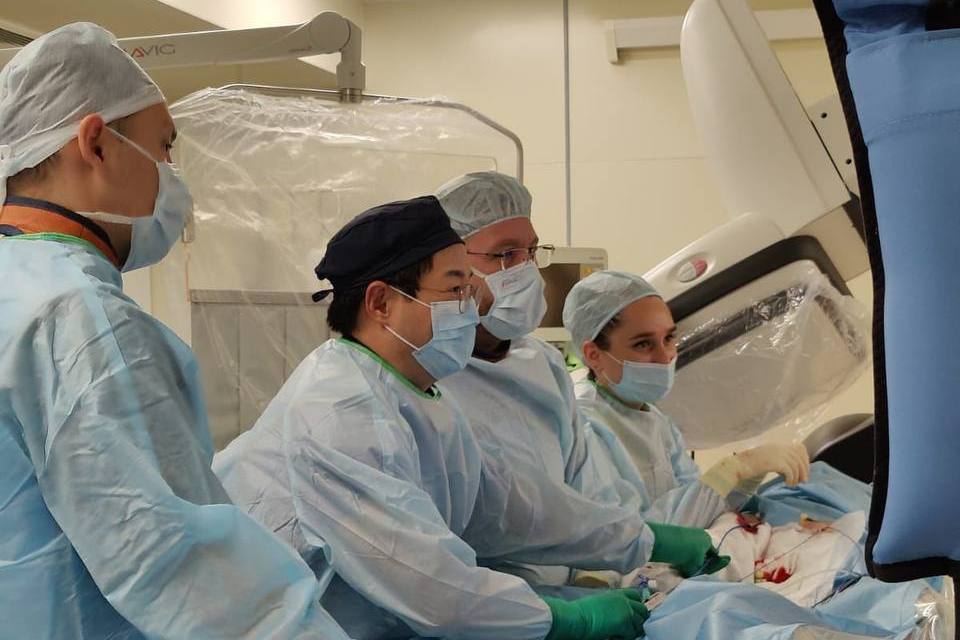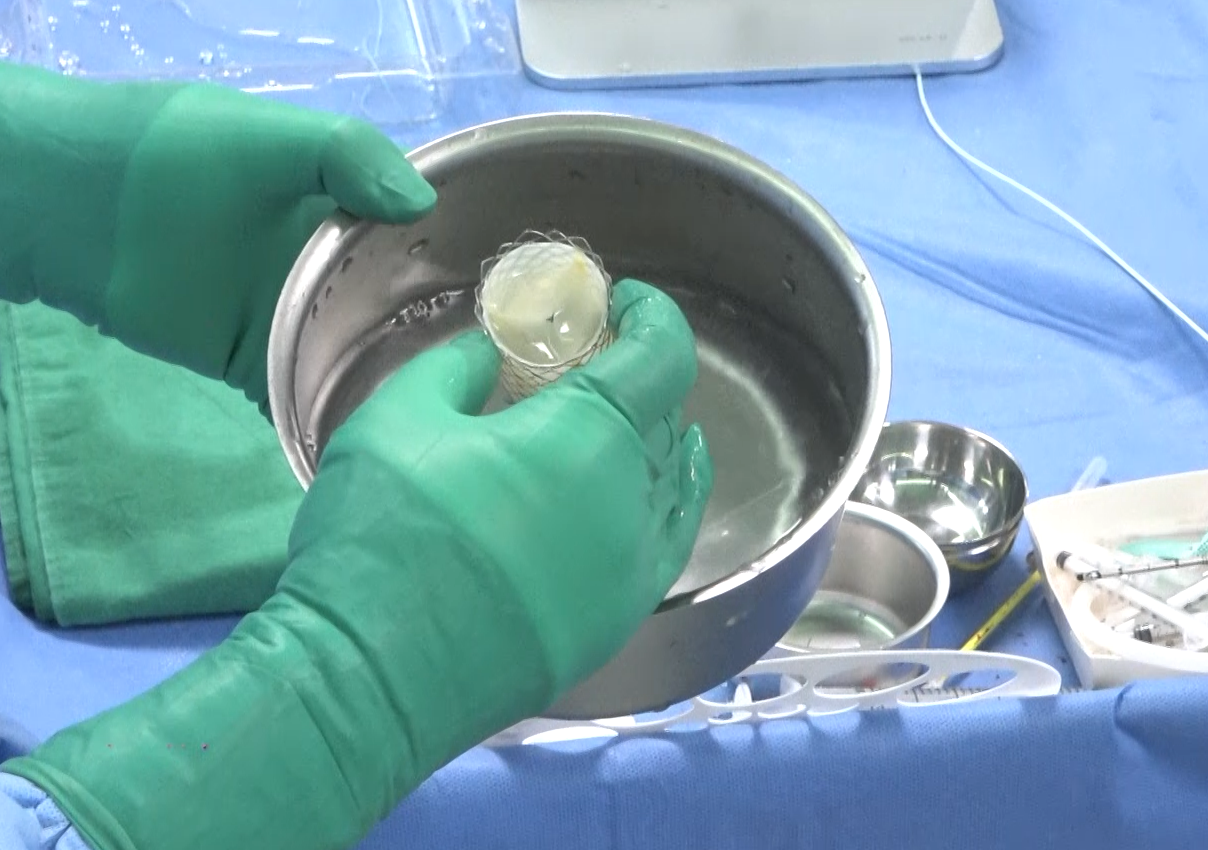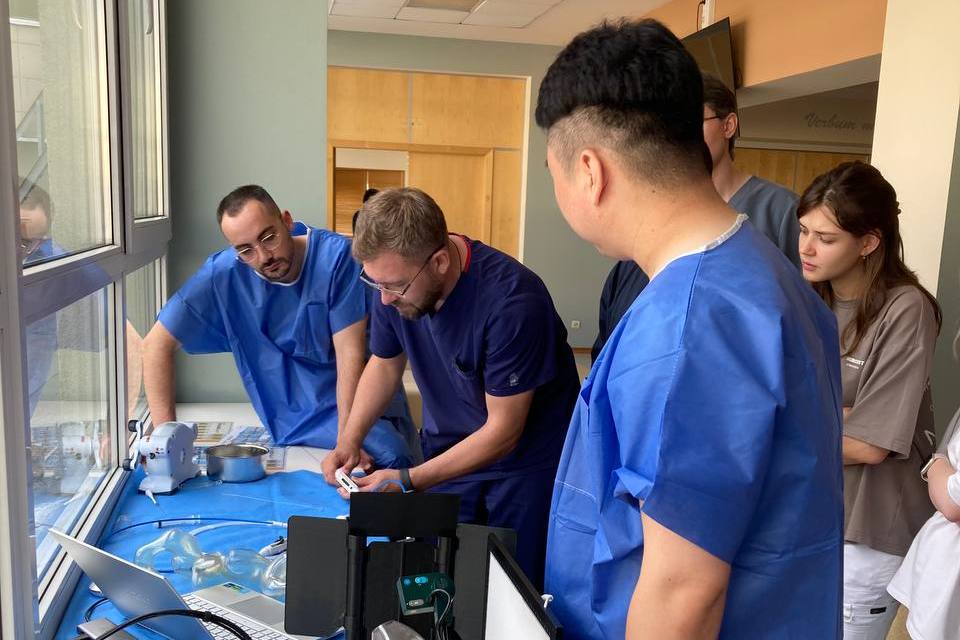
Endovascular surgeons at Almazov National Medical Centre have started a new chapter in the treatment of pediatric patients with anomalies of the right ventricular outflow tract. The specialists have successfully performed transcatheter implantation of a prosthetic pulmonary valve in a child who had undergone staged correction of a complex heart defect in early childhood.
Previously, these patients underwent open surgery under cardiopulmonary bypass, which carries a high risk of complications. Despite the availability of balloon-expandable transcatheter prosthesis technologies, they could not always be used because of the variety of anatomical variants. This year, endovascular surgeons received a new implantable device that successfully addresses complex pulmonary valve disorders, significantly expanding the range of patients suitable for endovascular repair.

“The new transcatheter self-expanding prosthesis with a nitinol frame is delivered to the affected pulmonary valve area using a folded delivery system. Once in the body, the device expands to its designed dimensions and immediately becomes functional. Thanks to this innovation, we can now help a group of patients who previously could only be operated on with open-heart surgery.”— Artem Gorbatykh, Head of Interventional Surgery Research Laboratory

Prior to the valve implantation, a seminar and a hands-on master class were held to teach the technology of transcatheter implantation of the new device at Almazov Centre. Colleagues from South Korea demonstrated the implantation procedure, and then Professor Choi Jae Young, Head of the Department of Congenital Heart Defects, who has extensive experience in this field, helped to implant the prosthesis in the operating theatre. The minimally invasive procedure went without complications and the child was discharged on the second day after surgery.
The endovascular surgery team at Almazov Centre has successfully mastered the new technology of transcatheter pulmonary valve implantation. They plan to increase the volume of care for patients using transcatheter methods of treatment in the future.
